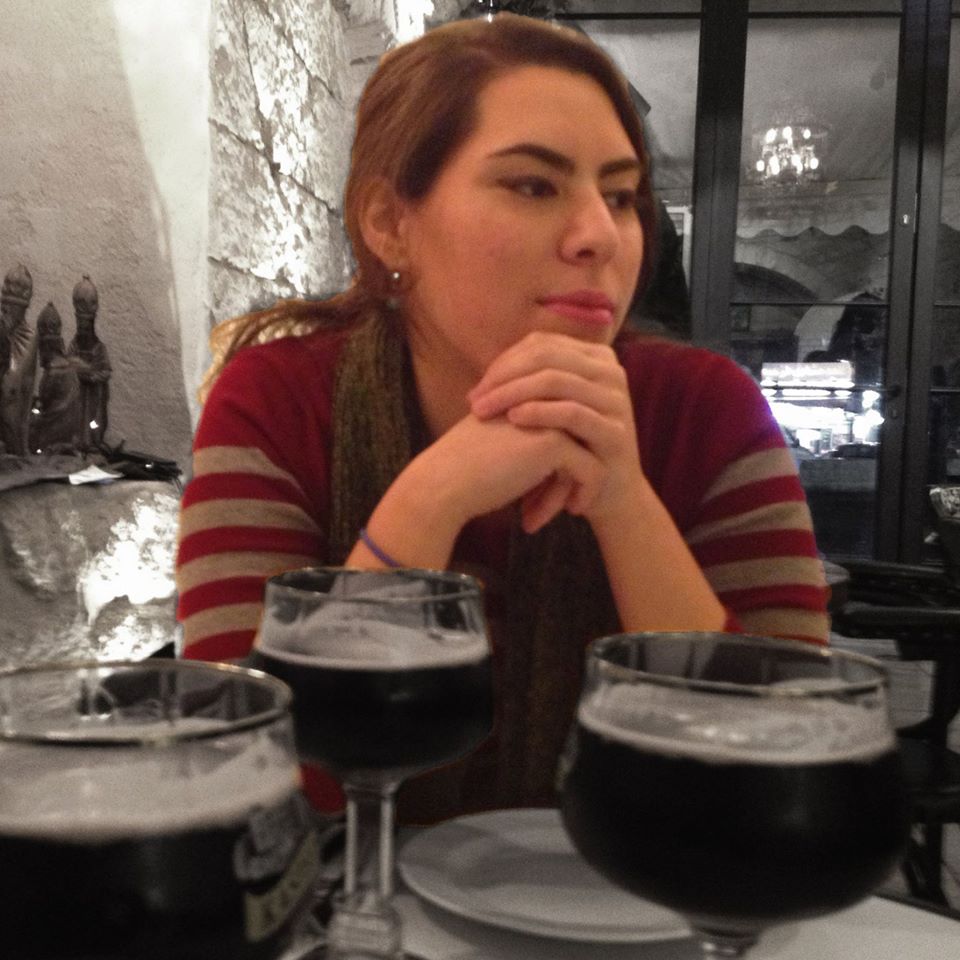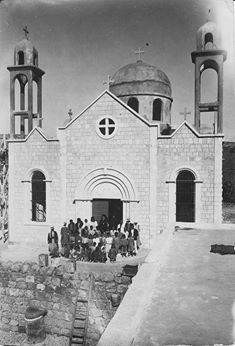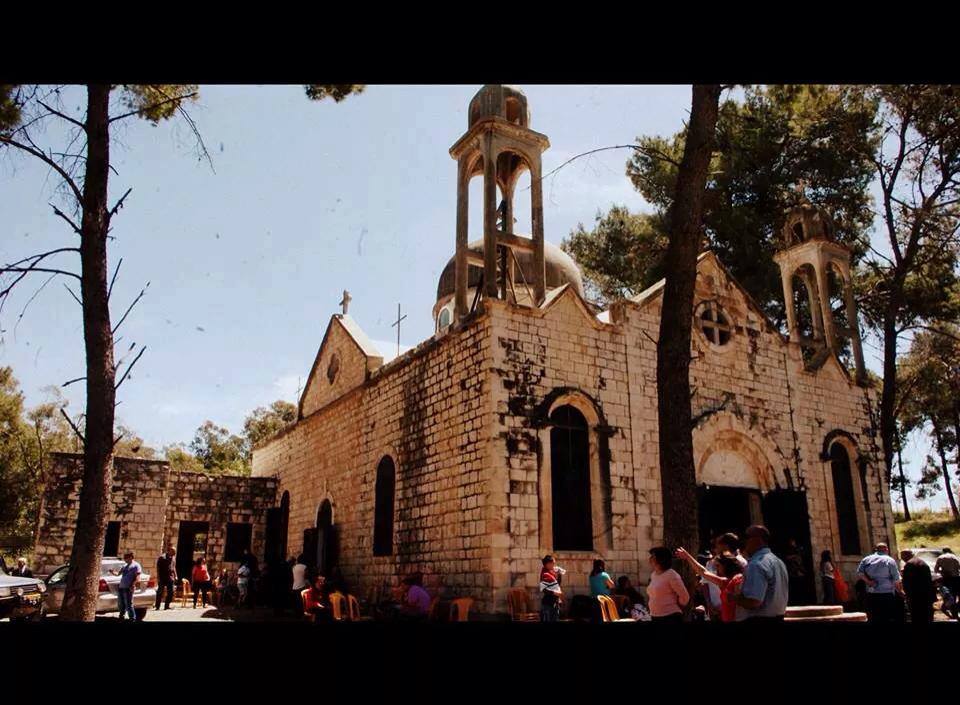The refugees return for one day by Narmeen Bisharat, Israel
In the pictures is the church in 1936 and now.
 Let’s go on a small road trip. I’ll try my best to give you the directions after all, not everyone can come to this place. I’ll try my best to draw for your imagination a picture of this heavenly place. On road 75, between Nazareth and Haifa – about 10 km from Nazareth – between Timrat and Kfar Hahoresh and front of Migdal HaEmek. There is an entrance to the right, take it and then take right before the water tanks (or something like it, never really asked what they are). It is a dirt road; if it is hard to take the car you can park and continue on foot, our destination is not far. Go up the road through a small forest. For a little while, you will be surrounded by trees and cactus on both sides of the road. On this stretch of road, you will pass by an abandoned building which used to be a mosque. Along the road you will also see some ancient graves; the names of the dead have been erased by time. Make no mistake they belong to people who once lived in this place many years ago. As you continue driving, you will see a building. If you know what you are looking at, you will distinguish that building as a church. So continue until you go far up the hill to the ground where the church lies. Actually there are two churches, but my story is about the first one.
Let’s go on a small road trip. I’ll try my best to give you the directions after all, not everyone can come to this place. I’ll try my best to draw for your imagination a picture of this heavenly place. On road 75, between Nazareth and Haifa – about 10 km from Nazareth – between Timrat and Kfar Hahoresh and front of Migdal HaEmek. There is an entrance to the right, take it and then take right before the water tanks (or something like it, never really asked what they are). It is a dirt road; if it is hard to take the car you can park and continue on foot, our destination is not far. Go up the road through a small forest. For a little while, you will be surrounded by trees and cactus on both sides of the road. On this stretch of road, you will pass by an abandoned building which used to be a mosque. Along the road you will also see some ancient graves; the names of the dead have been erased by time. Make no mistake they belong to people who once lived in this place many years ago. As you continue driving, you will see a building. If you know what you are looking at, you will distinguish that building as a church. So continue until you go far up the hill to the ground where the church lies. Actually there are two churches, but my story is about the first one.
St. Jacob church for the Melkite Roman Catholic, build around 1936, is in Ma’alul. There is an interesting story of why this church was built and it goes as something like this; at the time some families from the Orthodox parish in Ma’alul experienced some problems with the parish. Anyway they wanted a church for their own, but the bishop didn’t give permission, so they went to the Roman Catholic bishop for help. He gave permission to build a church as long as those families converted to Catholicism instead of Orthodox. St. Jacob church was finished in 1936 and I have been told that my grandfather was one of the firsts to be baptized there. The church was meant to be seen from the main road, so that the bishop could see the church when he passed between Haifa and Nazareth. However, this can’t be seen now since the village was depopulated and destroyed in 1948. Yet this church still stands, but has no one to pray inside it. However those past years the church opens its doors for one day at Easter Monday. The refugees return with their children and grandchildren and great-grandchildren, Christians and Muslims, come to celebrate together where they actually believe they belong. They don’t live far from Ma’alul, most of them made a home in Nazareth and Yaffa of Nazareth, yet they still hope that one day they will return to their village, to rebuild what was lost. On Easter Monday, they live this fantasy. The celebration itself is nothing extraordinary. There is a council for the church and its members are the children of refugees. The council organizes a pleasant celebration. A week before their arrival, they clean the dust inside the church, and they clean the path outside so people can park the cars. So on Easter Monday everything is ready. There is a mass that goes for an hour and a half. Not everyone takes part and a lot of people are outside greeting each other and talking about everything and nothing. Some people you see every day and some just on special occasions. The council makes sure that there are coffee stands and some traditional pastries for everyone. Of course, the Easter symbol is there; eggs. There is a great amount of eggs in baskets for the children to play with.
Like many of those people, I am the same. My grandparents were born in Ma’alul and lived there ‘till they had to leave. I grew up listening to their stories about how they lived and how they left, and how they rebuilt their lives elsewhere. However, I don’t feel what others feel, I don’t want to live in a false hope. I don’t like that this event turned out to be a media circus. I know that many people feel like me. They know it is just a fantasy that Ma’alul is not what it used to be. But there is no harm to celebrate the holiday there, even if you are not religious. It is still a nice place to visit and have a picnic from time to time.




Leave a Comment
Want to join the discussion? Feel free to contribute!